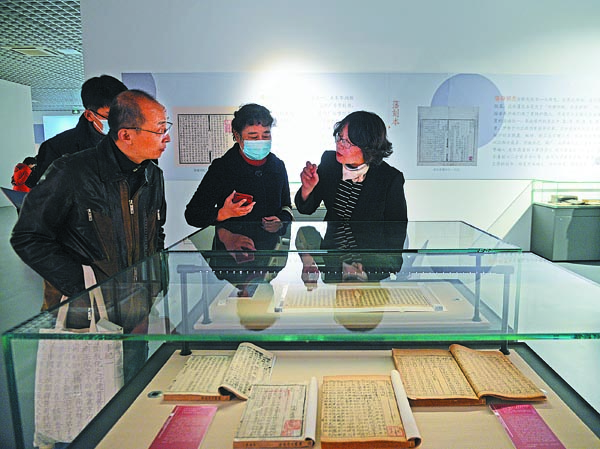

Lovingly preserved 'treasure' from universities' collections draws huge interest, Wang Kaihao reports.
About 1,300 years ago, a group of Buddhist monks or pilgrims copied a roll of sutra by hand and, in so doing, carried out an act of utmost homage to the deities. Despite the passing of time, the color has not faded, and therein lies a story of supreme human devotion. It was written in their blood, though the manner of its extraction is still not confirmed. It may have been the result of biting their own fingers to provide the "ink". More than a millennium has passed but, because of the addition of mineral dyestuffs mixed in with the blood, the color on the 3-meter-long scroll has not diminished.
This manuscript, Dafangbianfo Bao'en Jing ("sutra on the greatness of Buddha's repayment of kindness"), or simply known as "the gratitude sutra", was rediscovered in 1900 in one of the Mogao Caves at Dunhuang, Gansu province. About 60,000 volumes of ancient documents were found in that Buddhist grotto, commonly called "the library cave".
Successively owned by several collectors but now part of the collection of Nanjing University, the "gratitude sutra "makes a rare public appearance at an exhibition of ancient books at the university's art museum in the capital of Jiangsu province.